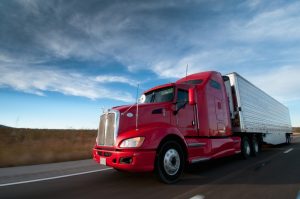 We've all seen it before – a truck on the side of the road with the hood up and the driver desperate to figure out what’s wrong. In this situation, not only is a customer not receiving goods on time, but the problem is exacerbated by the fact that most truck breakdowns occur in rural areas, with no help in sight. To add insult to injury, a driver who gets paid per mile is sitting idle and not earning a living.
We've all seen it before – a truck on the side of the road with the hood up and the driver desperate to figure out what’s wrong. In this situation, not only is a customer not receiving goods on time, but the problem is exacerbated by the fact that most truck breakdowns occur in rural areas, with no help in sight. To add insult to injury, a driver who gets paid per mile is sitting idle and not earning a living.
According to emergency road call stats, nearly 50% of truck breakdowns occur for reasons other than just the tires. There are myriad issues to contend with.
Onboard sensors in the trucking industry
For several years now the trucking industry has monitored fleets via onboard sensors. These sensors give a view of each truck's current RPM, speed and even braking. It's all done with the goal of saving fuel and reducing costs.
But with numerous other sensors inside a truck – such as mass airflow, crankshaft, heat/oxygen, and camshaft position sensors (to name a few) – innovative firms are looking to monitor more than just what's going on inside a truck at any given time. They want to take the flood of data coming from trucks and make informed predictions about what may happen next. The question they're asking is this: “What if we could predict well in advance which trucks are on the verge of breaking down, so we could make repairs before the truck ends up idle on the side of the road?”
Through the use of sensors and streaming technology, organizations now have this ability. Streaming technology gives trucking firms the ability to do analysis on sensor data that never rests. As this blog illustrates:
Streaming technology "supports true real-time analytics, advanced pattern detection, unsupervised clustering, text analytics, and data quality capabilities to name a few. Data scientists can now deploy SAS predictive models, including decision trees, neutral networks, regressions, and more advanced deeper learning models, all in real-time. In addition, SAS also offers streaming kmeans clusters, which calculate the clusters as new events occur, which can then trigger alerts, be sent into Hadoop, or visualized in a dashboard."
What sounds like a project out of the labs at a leading university is already happening in the trucking industry.
Another example is a trucking firm in the United States that created a service for its fleet operator customers. With a fleet of 40,000 trucks and 60-plus sensors per vehicle, this firm integrated past warranty claims, maintenance history and what was considered an average normal for sensor readings to determine when a truck was about to go out of commission. Using SAS Event Stream Processing in conjunction with sensors inside each vehicle, these trucking firms stream data in real time, allowing them to predict when a truck will most likely break down. In turn, they can be proactive about making repairs before a driver gets stranded. The result: The trucking firms have seen an increase of 30% in truck uptime, and have predicted likely failures 30 days in advance with 90% accuracy.
Things like driverless cars and refrigerators that communicate with your television may get all the headlines. But it's really the behind-the-scenes uses of IoT that are creating groundbreaking results. Happier customers, safer drivers, lower costs – they're all the result of companies that are using streaming data technology like never before.


2 Comments
Nice job Todd, as always. In ESP 4.3 we are bringing all sorts of new learning models into ESP, and this is just the beginning. We introduced 5 new window types for analytics: Score, Train, Caldulate, Model Supervisor, and Model Reader (ASTORE). Here are the algorithms that will be available across Score, Train, and Calculate: Streaming K-Means, Streaming DBScan, Streaming Pearson's Correlation, ASTORE Scoring, Weibull Distribution Fitting, Short Time Fourier Transfrom, and Text Tokenizer. ASTORE execution support will allow users to train in CAS actions and score in ESP for the following: Support Vector Data Description, Random Forest, Gradient Boosting Tree, Factorization Machine, and Support Vector Machine. We can bring these new analytics into the truck, into vehicles and out to the edge. This is a huge differentiator for us.
Good article. If the reefer box is integrated into the readings additional expenses can be mitigated reducing loss of perishable items and the insurance claims that go along with them.